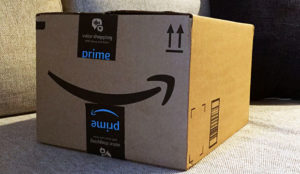Most retailers don’t have the in-store technology to view customer information across various touchpoints, suggests a new study from Kibo, “Technologies That Are Changing How We Think of Brick and Mortar.”
Fifty-eight percent of retailers who participated in the study, released last Thursday, acknowledged they did not have that capability.
The study was based on questions posed to 115 retail executives during an on-site benchmarking session at the Future Stores 2017 conference.
Based on its findings, it appears that a majority of businesses currently are unable to automate shoppers’ information on mobile devices or kiosks while they are present in their stores.
“In order to provide a seamless omnichannel experience to consumers, retailers must have a complete picture of all consumer activities, regardless of buying channel,” said Kibo CMO Tushar Patel.
“Nothing is more frustrating to a consumer than a retailer who has blind spots [about] their activity,” he told the E-Commerce Times.
Coming Around
Many retailers have been using a wide range of technologies to capture more personalized data from their customers, according to the report.
Eighty-two percent of participants said they used mobile devices and tablets, 76 percent used kiosks, 41 percent used mobile point-of-sale devices, 26 percent used Bluetooth low-energy beacon technologies, and 19 percent used near-field communication.
However, 64 percent of retailers felt they were only somewhat effective at capturing in-store data on customer preferences.
Only 42 percent of retailers said they had the in-store technologies to view customer data across a variety of touchpoints.
Personalization Plans
Another key in-store technology retailers have been adopting is personalization.
Fifty-two percent of participating retailers planned to invest in personalization technologies within the next 12 months or already had begun to implement the strategy.
However, 22 percent of retailers said they had not begun to personalize and were not sure if they had the capacity to do so.
Fulfillment Choices
Offering more ways to get products into customers’ hands has proved daunting for many smaller retailers.
Major retailers including Walmart, CVS, Sears and Target offer ship from store and in-store pickup of online orders — and some have done so for years.
However, more than 40 percent of retailers who participated in the Kibo study said their technologies wouldn’t support those services, or that they were not ready to implement them.
Retail Pressure
With the exception of Amazon and Walmart, many retail stocks recently have been under severe pressure, noted Cindy Zhou, principal analyst at Constellation Research, after the SPDR S&P Retail ETF fell to its worst week since last December.
Thirty-seven percent of retailers who responded to a poll she conducted during Microsoft’s Modern Customer event indicated their biggest challenge was delivering a consistent digital-to-physical multichannel experience to customers.
“Customers are using their multitude of mobile devices to research and shop for products — reading reviews, asking their friends on social — before making a decision,” Zhou told the E-Commerce Times. “
The mobile shopping experience is critical, she said, but few retailers have been able to deliver a mobile app that makes it easy for customers to see availability, shop and check out items with ease.
One major retailer that has undertaken a digital transformation project, Zhou said, is a company that has a retail brick-and-mortar presence, an e-commerce website and a catalog division — but each is part of a separate system, and they can’t communicate with each other.
Personalizing in-store technology to see customer data is not as easy as one might think, observed Nikki Baird, managing partner at RSR Research.
“Yes there are definitely gaps in terms of needing mobile devices,” she told the E-Commerce Times, but at the same time there are a lot of concerns about giving frontline employees access to personalized customer data.























































@David, this is a great article, which does a great job of highlighting the struggles for retailers under pressure to provide omnichannel shopping experiences. Before retailers can provide a holistic view of shopper activity across channels, they need a unified commerce platform that brings together all orders and purchases across all channels and systems — the stores (POS), the ecommerce site and marketplaces (OMS), the call center (OMS also).
With the basics in place (and these basics are available to the smaller retailers mentioned in the article), retailers can easily put tablets in the store associates’ hands that can help. Oasis Fashions’ store associates carry tablets to look up customer activity and inventory availability and then for checkout. Crate & Barrel has an ecommerce website, a mobile site, and in-store kiosks that all share and update the same wedding registry.
The retailers that don’t take advantage of today’s cloud-based order management systems that power these capabilities stand to lose to those who do.
Great article.
Manish Chowdhary, CEO, https://www.pulse-commerce.com
Great article @David. I’m very much sure about this in-store technology implementation which will bring a big change in retail industry. And as you mentioned, digital transformation is an innovation-led opportunity across industries. But, on the other side it is very significant to check all the concerns as well. Overall this is a nice article and I really enjoyed reading it with interest!